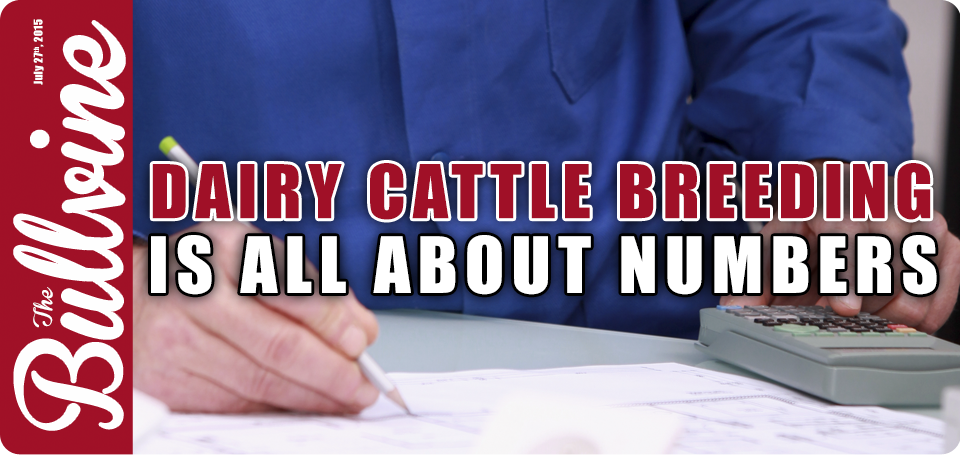Dairy cattle farming has many numbers for breeders to review and weight as they go about their daily roles as manager, health care provider, bookkeeper, personnel manager, feed harvester, reproduction sequencer, animal selection or removal supervisor, ….. yes, the daily duty list is long. But in all cases, it is best to use a number when making a decision.
For this article, The Bullvine wishes to focus on the fact that science-based numbers (aka genetic indexes) are the best method to use when selecting the animals to produce the next generation.
Breeding – Is it Art or Science?
Dairy cattle breeders argue both sides of the answer to this question. Some breeders swear by a single observation, their impression or their experience (aka art) while others totally depend on science-based numbers. Let’s dig deeper.
What’s in the Number?
Breeders can use the number they can actually see, like lactation milk yield, or a cow’s milk genetic index that considers factors like age, herd mates, progeny, pedigree and now DNA analysis. The same applies to using a cow’s PTAT rather than her own classification. It is best to consider all factors.
Can the Number be trusted?
Accuracy is paramount to success or failure in dairy cattle breeding. Making a breeding decision based a single individual observation is 20 to 25 percent accurate in predicting a cow’s progeny’s performance. Using a cow’s genetic index that includes pedigree, DNA analysis and performance will be sixty-five to seventy percent accurate.
Does the Number Mean Anything for You?
Every breeder needs to have a breeding plan (Read more: What’s the plan?) for their entire herd or an individual mating. In the plan, there needs to be the importance of individual traits. Not every trait, for which an index is available, is essential for every herd or mating. Indexes like gTPI and NM$ should be included in every plan.
Breed for Desired Outcome.
Higher Milk Revenue – Do you breed for protein yield or protein percent? Very definitely it is protein yield. It is the volume of protein that breeders are paid for. Higher protein percent is associated with less milk production.
Improving Herd Longevity – Do you select a genomic sire for his PL (Productive Life index) or how long his dam produced milk? Very definitely for his PL. His dam’s length of life has many non-genetic factors and will have a very low heritability.
Improving Fertility – When mating a heifer do you consider her FI (Fertility Index) or the frequency with which her dam calved? Very definitely her FI. Her dam’s calving interval has an extremely low heritability, almost zero.
Developing a High Type Herd – Do you select a sire based on PTAT or the number of show winners he produces? Very definitely his PTAT. Show herds do not use a wide spectrum of sires and do not randomly use sires, this results in potentially biased genetic evaluations on the sires they use. Since many of the sires they are used on are not used in chimerical herds, the evaluations on these sires are biased. When a “type” sire does cross into wide stream usage you start to see evaluations like Goldwyn’s. Goldwyn is often noted as a great sire of show winners yet his PTAT of +1.81 and his PL of -0.5 reflects that used across the entire population he does not stand out as a significant improver.
The Bullvine Bottom Line
Genetic improvement depends upon using science to improve accuracy and the completeness of decision making. The rate of genetic advancement has improved significantly over the past decade, and the pace will double again in the next decade. Breeding is about science.
Get original “Bullvine” content sent straight to your email inbox for free.


















Leave a Reply
You must be logged in to post a comment.